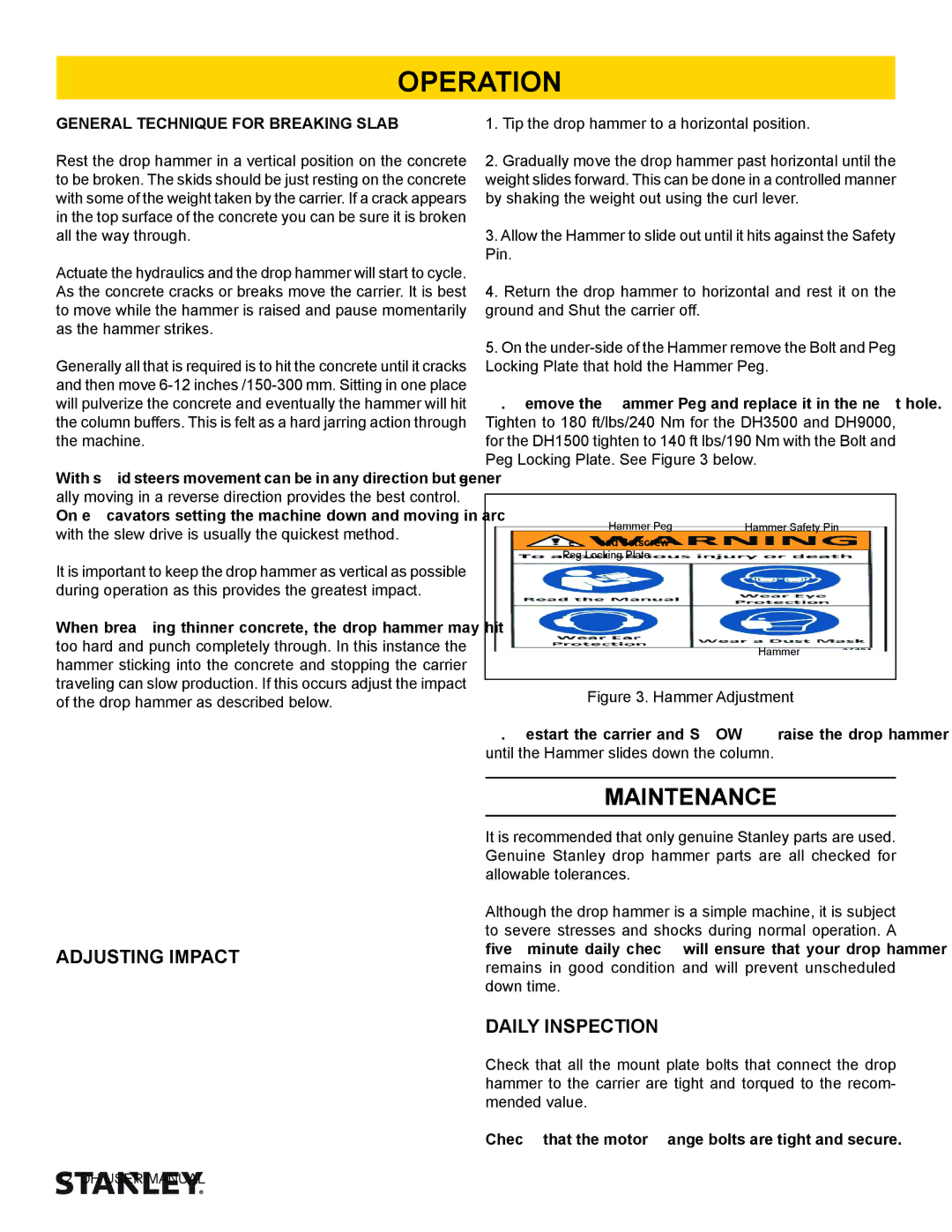DH3500, DH1500, DH9000 specifications
Stanley Black & Decker, a leading name in power tools and home improvement products, has introduced a series of high-performance air compressors that cater to various needs. Among these are the DH9000, DH1500, and DH3500 models, each packed with unique features and innovative technologies designed to enhance efficiency and ease of use.The Stanley Black & Decker DH9000 is a robust air compressor characterized by its high output and versatility. With a maximum pressure of 200 PSI, this model generates ample air power for heavy-duty applications. It is ideal for both professional mechanics and DIY enthusiasts who require reliable performance for tasks like inflating tires, powering pneumatic tools, or painting. The DH9000 features a durable steel tank designed for longevity and stability. Additionally, its oil-free pump ensures maintenance-free operation and reduces the risk of contamination, making it a user-friendly option for a wide array of tasks.
On the other hand, the DH1500 is tailored for those who need a more portable solution without sacrificing performance. This model boasts a compact design, making it easy to transport around job sites or for home use. It provides a maximum pressure of 150 PSI and is perfect for light to medium tasks such as powering nailers or inflating sport equipment. The DH1500’s innovative low-noise operation is a significant advantage, enabling users to work in residential areas without generating excessive sound. Furthermore, its quick recovery time ensures efficient performance, allowing users to complete their projects promptly.
Lastly, the DH3500 strikes a balance between power and portability, making it suitable for a variety of applications. With a maximum pressure of 175 PSI, it provides an excellent air supply for tasks like brad nailing, stapling, or air brushing. The DH3500 is equipped with a durable, oil-free pump, ensuring a long service life and minimal maintenance. Its heavy-duty gauge and regulator allow precise adjustments of the air pressure, which is essential for achieving optimal performance in different tasks. The built-in handle and lightweight design make the DH3500 easy to transport, perfect for users on the go.
In summary, the Stanley Black & Decker DH9000, DH1500, and DH3500 models represent a blend of power, portability, and reliability suitable for various applications. Each compressor is designed with user-friendly features and advanced technologies that cater to the specific needs of both professional tradespeople and hobbyists alike. Whether you're tackling heavy-duty projects or light tasks, these air compressors stand out for their performance and innovation in an ever-evolving market.

